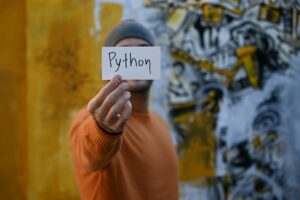A Deep Dive into TensorFlow’s Neural Structured Learning: Training Strategies with Structured Signals

Meta Description: Discover how TensorFlow’s Neural Structured Learning utilizes structured signals to enhance neural network training, fostering more robust and adaptable machine learning models.
Introduction
In the rapidly evolving landscape of machine learning, the quest for more robust and adaptable neural networks is ever-present. TensorFlow’s Neural Structured Learning (NSL) framework emerges as a pivotal tool in this pursuit, introducing innovative training strategies that leverage structured signals. This deep dive explores how NSL transforms traditional neural network training, enhancing model accuracy and resilience.
What is Neural Structured Learning?
Neural Structured Learning is a groundbreaking learning paradigm designed to train neural networks by incorporating structured signals alongside traditional feature inputs. Unlike conventional methods that rely solely on labeled data, NSL utilizes both labeled and unlabeled data, enhancing the model’s generalization capabilities.
Structured Signals Explained
Structured signals represent relationships or similarities between data samples. These can be explicit, such as those defined by graphs, or implicit, like those induced by adversarial perturbations. By harnessing these signals, NSL can exploit the underlying structure within the data, leading to more informed and accurate predictions.
Benefits of Structured Learning with TensorFlow NSL
Implementing NSL within TensorFlow offers several advantages:
- Enhanced Model Accuracy: Leveraging both labeled and unlabeled data can significantly improve the accuracy of machine learning models, especially when labeled data is scarce.
- Increased Robustness: Models trained with NSL are more resilient to adversarial attacks, making them safer for deployment in sensitive applications.
- Flexibility: The NSL framework is adaptable, supporting various types of neural networks, including feed-forward, convolutional, and recurrent architectures.
Training Strategies with Structured Signals
TensorFlow’s NSL framework provides a suite of APIs and tools that simplify the integration of structured signals into the training process.
Keras APIs
NSL extends TensorFlow’s Keras API, enabling seamless training with both explicit graph structures and implicit adversarial perturbations. This integration allows developers to incorporate structured signals without overhauling their existing models.
TensorFlow Operations and Functions
For those utilizing lower-level TensorFlow APIs, NSL offers specific operations and functions to integrate structured learning into custom training loops. This ensures that even highly specialized models can benefit from the structured learning approach.
Tools for Graph Construction
NSL includes utilities for building and managing graphs, facilitating the creation of structured inputs necessary for effective training. These tools support the easy construction of graphs that reflect the relationships within the data.
Practical Applications of Neural Structured Learning
NSL’s versatility makes it applicable across various domains:
- Natural Language Processing: Enhancing language models by understanding word relationships and contextual similarities.
- Computer Vision: Improving image classification tasks by recognizing spatial relationships and patterns.
- Recommender Systems: Refining recommendations by analyzing user-item interaction graphs.
Getting Started with TensorFlow’s Neural Structured Learning
Embarking on structured learning with NSL is straightforward:
- Installation: Install NSL via pip:
bash
pip install neural-structured-learning
Ensure you are using TensorFlow version 1.15 or higher, excluding TensorFlow 2.1 due to compatibility issues.
-
Tutorials and Resources: TensorFlow offers comprehensive tutorials, including video series on YouTube and interactive Colab notebooks, to help you get started with NSL.
-
Community Contributions: Engage with the NSL community on GitHub to explore case studies, contribute new algorithms, and participate in ongoing research projects.
Conclusion
TensorFlow’s Neural Structured Learning framework represents a significant advancement in machine learning training methodologies. By effectively leveraging structured signals, NSL enhances both the accuracy and robustness of neural networks, paving the way for more reliable and versatile AI applications. Whether you’re a seasoned machine learning practitioner or a self-learner embarking on your AI journey, integrating NSL into your workflow can drive meaningful improvements in your models.
Ready to enhance your machine learning skills and explore advanced training strategies? Join us at Invent AGI and take your AI expertise to the next level!




